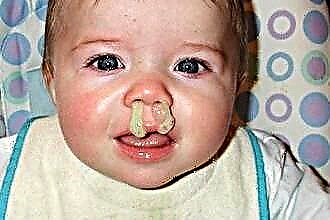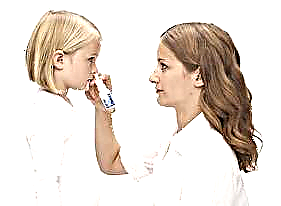Ear washing is a hygienic procedure that allows you to eliminate sulfur plugs and inflammation in the external auditory canal. Course physiotherapy helps to eliminate local manifestations of ear pathologies and improve hearing. With suppuration, therapeutic manipulations should be carried out by a specialist, which is due to the risk of serious complications.
Self-rinsing of the ear is possible only if all the rules for the physiotherapy procedure are followed. Ignoring contraindications and safety precautions can lead to a deterioration in health due to inflammation of the internal parts of the auditory analyzer. To avoid negative consequences, you should consult with an otolaryngologist who will give clear recommendations on the method of carrying out physiotherapeutic treatment.
Indications and contraindications

With the development of catarrhal processes in the ear, damage to the mucous membranes and skin in the external auditory canal occurs. To prevent the spread of foci of inflammation and stop symptoms, experts recommend washing. Direct indications for ear cleansing are:
- purulent otitis media;
- sulfur plugs;
- furunculosis;
- external diffuse otitis media.
Washing the ears at home helps to regress inflammatory processes and improve tissue trophism. This leads to the strengthening of local immunity and the restoration of regenerative processes in the mucous membranes of the ENT organs.
Important! It is undesirable to rinse when solid objects get into the ear canal. This can lead to further damage to the tissues of the external auditory canal and perforation of the ear membrane.
Washing methods
How to rinse your ear at home? To eliminate the possibility of infection entering the hearing analyzer, you should thoroughly wash your hands before performing the procedure. The instruments used for carrying out hygienic manipulations should be disinfected with an alcohol solution.
Physiotherapy activities can be carried out using the following tools:
- syringe;
- syringe;
- wadded turundas.
When using a syringe, the metal needle must be disconnected so as not to damage the auricle and ear canal.
For douching, otolaryngologists advise using small pears with soft rubber tips. With their help, you can easily suck pus from the ear canal with otorrhea and rinse the ear painlessly. Immediately before irrigation, the ear canal should be cleaned of wax and pus residues with cotton swabs dipped in hydrogen peroxide.
Medicinal solutions
In most cases, washing your ears at home is done with boiled water. But in the presence of inflammatory processes, it is more advisable to use medicinal solutions that have a pronounced disinfectant, antiphlogistic and anti-edema effect. These include:
- hydrogen peroxide;
- chloramphenicol alcohol;
- camphor alcohol;
- tincture of calendula;
- boric alcohol.
Important! Alcohol solutions are irritating, therefore, before use, they must be diluted with water in a ratio of 1: 3.
Before carrying out the procedure, you should consult with a specialist. The presence of mechanical damage in the ear canal and perforated holes in the ear membrane is a direct contraindication to the use of alcohol solutions and tinctures.
It should be noted that irrigation cannot be performed if ear plugs occur. Before this, the sulfuric plug must be softened.
For these purposes, a few drops of warmed petroleum jelly, camphor oil or peroxide are poured into the ear canal. The procedure is repeated 3-4 times a day for several days.
Elimination of sulfur plug
How to flush your ears to remove ear plug? After preliminary softening of sulfur deposits, the hygienic procedure is performed using a syringe. As a liquid, you can use boiled water with a peroxide content of 0.5%. To obtain a medicinal composition with the desired concentration of hydrogen peroxide, mix 1 tbsp. l. water with 10 drops of the drug.
Cleaning the ear canal from the plug is carried out in several stages:
- lay the patient on his side so that the ear to be treated is on top;
- type a medicinal solution warmed up to 37 degrees into the syringe;
- insert the syringe rod into the ear canal;
- pour in the liquid without strong pressure;
- after 10 minutes, ask the patient to tilt their head so that the liquid flows out of the ear canal.
After all medical manipulations, it is advisable to wipe the auditory canal dry and insert a cotton swab into it.
Flushing out pus
For local treatment of purulent inflammation, you need to use a 3% hydrogen peroxide solution. It has disinfecting and anti-inflammatory properties, therefore it helps to eliminate catarrhal processes in the mucous membranes of the ENT organs. How to rinse your ears at home?
- put the bottle with the drug in a glass of hot water to heat the liquid to 38 degrees;
- draw a small amount of solution into syringe # 15;
- pour 1 ml of peroxide into the sore ear;
- after the solution stops hissing, tilt your head so that the liquid flows out of the ear canal.
Important! Do not use peroxide with the development of bullous polymorphic dermatitis.
To completely remove purulent masses from the auditory canal, the procedure is repeated several times. Using a cotton swab, the remaining fluid is removed from the ear, after which ear drops recommended by the otolaryngologist are instilled.
Treatment of children
How to rinse your child's ears at home? It is possible to independently perform hygienic manipulations only after visiting a specialist and preliminary training in washing. Such precautions are due to the hypersensitivity of the skin in childhood and the risk of allergic reactions when using concentrated medicinal solutions.
To eliminate ear plugs, drugs are used that contain surface active components. They help to soften the plugs and suppress the hypersecretion of earwax. In pediatric therapy, the following are often used:
- Rivanolin;

- Furacilin;
- "A-Cerumen".
During the infusion of the drug, the auricle is slightly pulled down and to the side. To prevent irritation, it is not recommended to insert the nozzle from the drug vial deep into the ear canal. To prevent the formation of sulfur plugs, the procedure is performed twice a month.
Possible consequences
Too frequent or incorrect hygiene procedures can lead to unpleasant consequences. That is why experts advise washing out on an outpatient basis, especially when treating preschool children. The most common complications include:
- inflammation of the ear membrane;
- skin irritation in the external auditory canal;
- the occurrence of perforated holes in the tympanic membrane;
- bleeding from the ear canal.
Before you rinse your ears at home, you need to consult a specialist. He will recommend drugs suitable for treatment and ways to reduce the concentration of potent substances in alcohol solutions. In 80% of cases, complications arise from the use of concentrated drugs that provoke the occurrence of edema and inflammation in the ear membrane.
Alternative remedies
Alternative medicine can be used to cleanse the ears of purulent masses and wax. Unlike pharmaceutical preparations, they do not contain synthetic substances, therefore, they provoke tissue irritation much less often. The following can be used as medicinal solutions:
- onion juice: bake the peeled onion in the oven, then squeeze the juice out of it. Mix 2 drops of juice with 1 tbsp. boiled water;
- licorice decoction: 1 tbsp. boil the crushed root of the plant in 300 ml of water. Mix the broth with water in equal proportions;
- decoction of bay leaves: pour a glass of boiling water over 5 bay leaves and boil for 10 minutes. Mix the strained broth with ½ cups of boiled water.
Specialist recommendations
To minimize the likelihood of complications, when performing physiotherapy procedures need to take into account several important nuances. How to properly rinse your ears?
procedures need to take into account several important nuances. How to properly rinse your ears?
- if you experience pain or severe itching when using hydrogen peroxide, stop the procedure;
- it is impossible to remove all the sulfur while cleaning the ears, since it prevents the penetration of pathogens into the ear cavity;
- do not use tinctures and alcohol solutions for washing in pure form;
- to dilute drugs, use only bottled or boiled water;
- if the condition of the tissues deteriorates and the mucous membrane swells, seek help from an otolaryngologist.
To prevent the formation of ear plugs, it is advisable to perform the procedure for cleaning the ear canal once a month.
However, it should be borne in mind that too frequent a hygiene procedure leads to a decrease in local immunity and an increased risk of developing a pathogenic flora.




